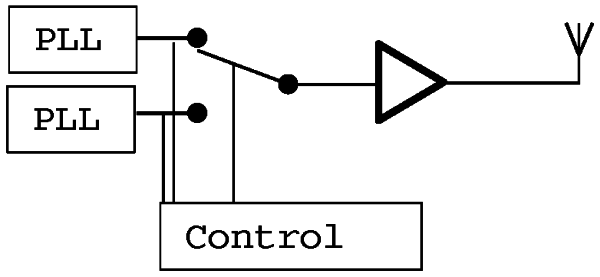| CPC G01S 11/08 (2013.01) | 25 Claims |

|
1. A method for determining at least one first virtual frequency switching time between a first frequency (f1) and at least one first further frequency (f1w.n), wherein the first frequency (f1) is of a first signal (S1) emitted from a first object and having a first phase progression and at least one first further frequency (f1w.n) is of a first further signal (S1w.n) emitted from the first object and having a first further phase progression;
determining a first first phase relationship (phi1.1) of at least one first further phase progression of at least one first further signal (S1w.n) to the first phase progression of the first signal (S1) at the first object;
determining a first second phase relationship (phi2.1) of the first signal (S1) received at a second object from a phase progression received at the second object, and of the at least one phase progression of the at least one first further signal (S1w.n) received at the second object; and
determining the at least one first virtual frequency switching time (t1.1) as a time at which, at the second object, the phase relationship between interpolated or received phase positions of the first signal and the first further signal (S1, S1w.1) corresponds to the first first phase relationship (phi1.1).
|